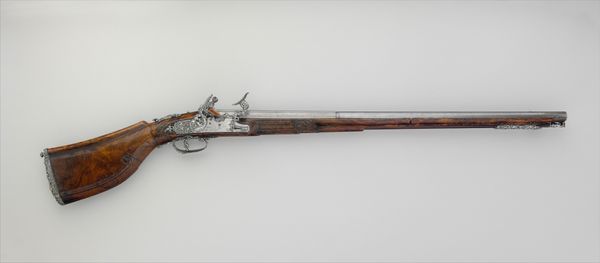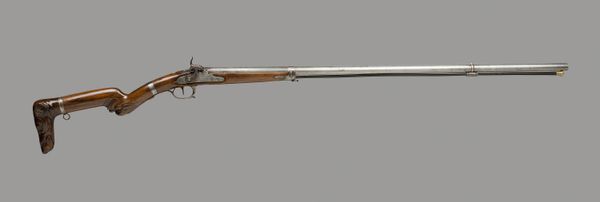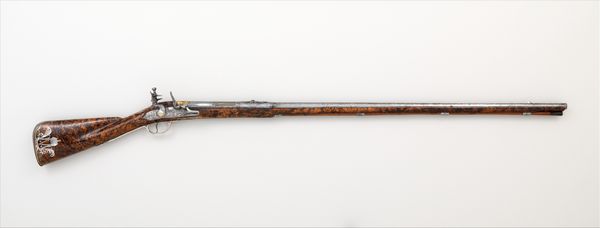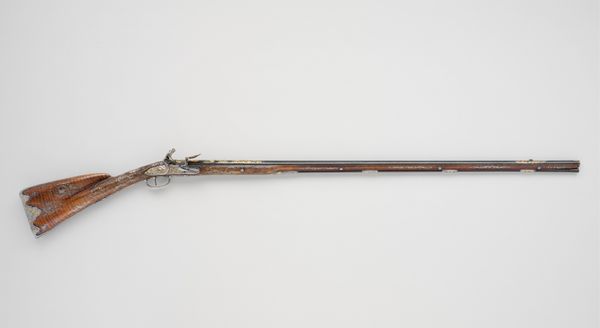
Pair of Double-Barreled Flintlock Pistols 1752 - 1753
0:00
0:00
carving, silver, metal, wood
#
carving
#
silver
#
baroque
#
metal
#
sculpture
#
wood
#
decorative-art
Dimensions: L. of each 14 3/8 in. (36.5 cm); Wt. of each 36 oz. (1030 g)
Copyright: Public Domain
Curator: What an exquisite example of Baroque craftsmanship! We are looking at a pair of double-barreled flintlock pistols created by François-Alexander Chasteau between 1752 and 1753. Notice the ornate silver and gold detailing contrasting against the dark wood. Editor: My immediate reaction is… uneasy. These aren’t merely functional objects; they’re statements of power, aren’t they? Symbols of a deeply unequal era. Curator: Undeniably. The pistol as a symbol carries weight. In this instance, we see it elevated through meticulous carving and precious metalwork, reflecting its owner’s status, a claim to authority and perhaps even projecting a veneer of divine right, don't you think? Editor: Right. That veneer is precisely what bothers me. This weapon represents more than just an individual’s defense. The period saw expansion and oppression, all fueled by tools just like these. Can we truly separate the beauty of the object from its historical context, especially when considering issues like colonialism? Curator: It's a critical consideration, isn't it? Yet the imagery—the flowing, almost organic quality of the carving—speaks to the artistic language of the period, the Baroque style flourishing during an era when luxury served a specific political purpose. Think of the iconography it implies! Power, conquest… but expressed through symbols. Editor: And who were the gatekeepers of those symbols? How did this refined violence affect everyday life, not only abroad, but in places such as France during those unstable times of economic disparities and growing resentment that helped to trigger the later revolution? How are firearms and their inherent power structures perceived today? Curator: Indeed. Those kinds of tensions make viewing an object like this complicated, fraught even. One has to be very mindful of not just aesthetic appreciation, but also grappling with the moral implications involved. Editor: So much visual excess in service of projecting absolute authority. We can appreciate the artistry, sure, but never without remembering the legacy of such tools and their presence as lasting signs of social control, am I wrong? Curator: No, you aren’t wrong at all. I think what remains potent about these pistols is how they prompt us to ask precisely those difficult questions. How aesthetics served politics, power, and exploitation... that is quite something to witness. Editor: Precisely, a stark, if unsettling, testament to our shared, complex history.
Comments
No comments
Be the first to comment and join the conversation on the ultimate creative platform.














